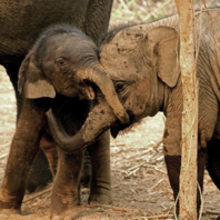Best of the blog
Issue: Zoonotic diseases
05 November 2015 article

It’s time for our last roundup of 2015, and we’ve definitely saved some of the year’s best content ‘til last. In one of my favourite posts of 2015, Anand Jagatia went to the University of Bath to talk to some researchers there about their development of ‘self-healing’ concrete, which uses bacteria that secrete calcium carbonate to fill any gaps in the material.
Anand also spoke to an international team who have discovered a rather interesting biofilm phenomenon: their growth oscillates between fast and slow. This new finding – a classic nutrient feedback loop – may help us treat persistent infections, by feeding the outside of a biofilm in order to starve the centre…
Earlier in the year, the Wellcome Trust’s online magazine, Mosaic, published a fascinating article on the microbiology associated with death and decomposition. In part one of our forensic-focused podcast, we spoke to Mo Costandi, the author of the piece, about his travels to ‘body farms’ in the US, and learnt how microbiology is helping to identify where and when somebody died.
When treating an infection, two drugs are better than one, right? Not necessarily. We spoke with Dr Pleuni Pennings, an evolutionary biologist from San Francisco State University, who has modelled how therapeutics that target different parts of the body may leave drug-free ‘sanctuaries’, from which resistance can emerge.
Back in June, we spoke to Society Member Laura Bennett to learn about her research into elephant endotheliotropic herpesvirus, or EEHV, for short. As its name suggests, EEHV is a disease of elephants, disproportionally affecting juvenile Asian elephants under 5 years old, with mortality rates estimated to be as high as 85 per cent..
Each year, the Society attends Parliamentary Links Day, an event organised by the Royal Society of Biology that brings together researchers, learned societies and parliamentarians. One of our members in attendance was Society Champion Arikana Massiah, who wrote about her experience of the event, which saw senior politicians and researchers lay out their thoughts for the future of UK science.
So that’s it for another year. Thanks to you all for taking the time to read, watch or listen to our posts – we’ll be back again in 2016 with more great stories, see you all then.
BENJAMIN THOMPSON
Head of Communications
[email protected]
